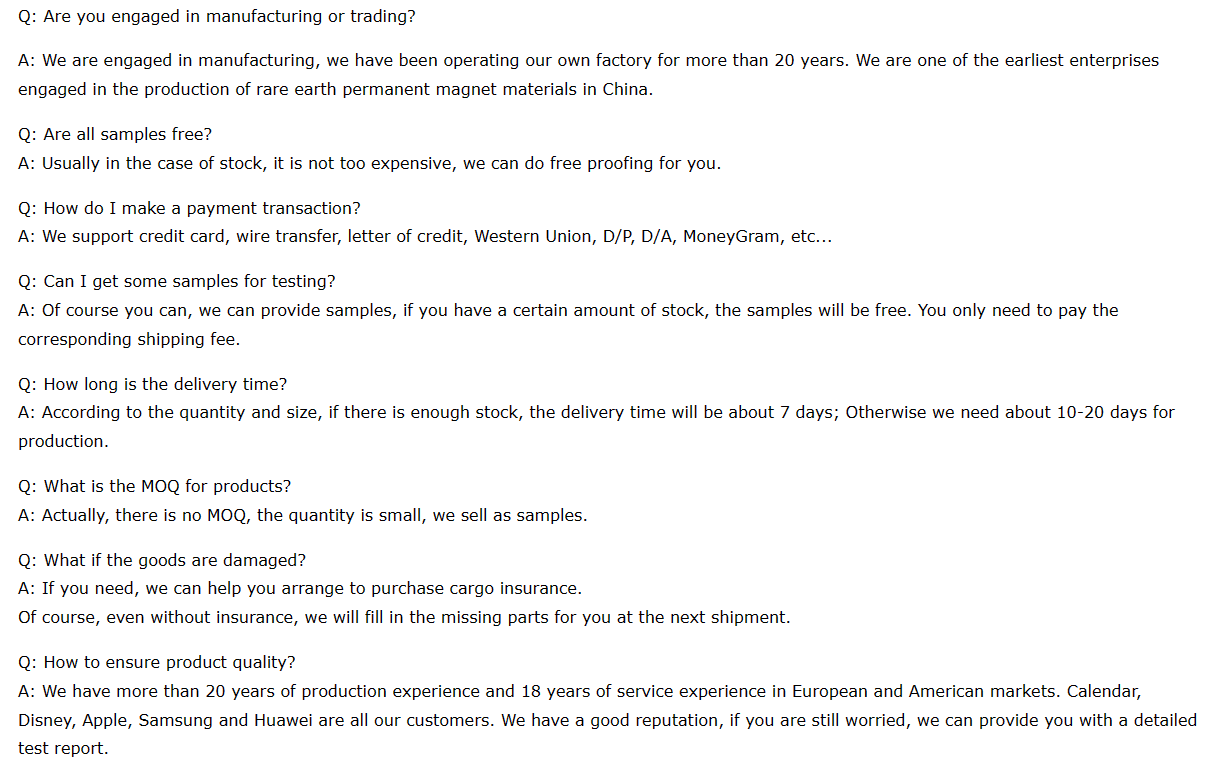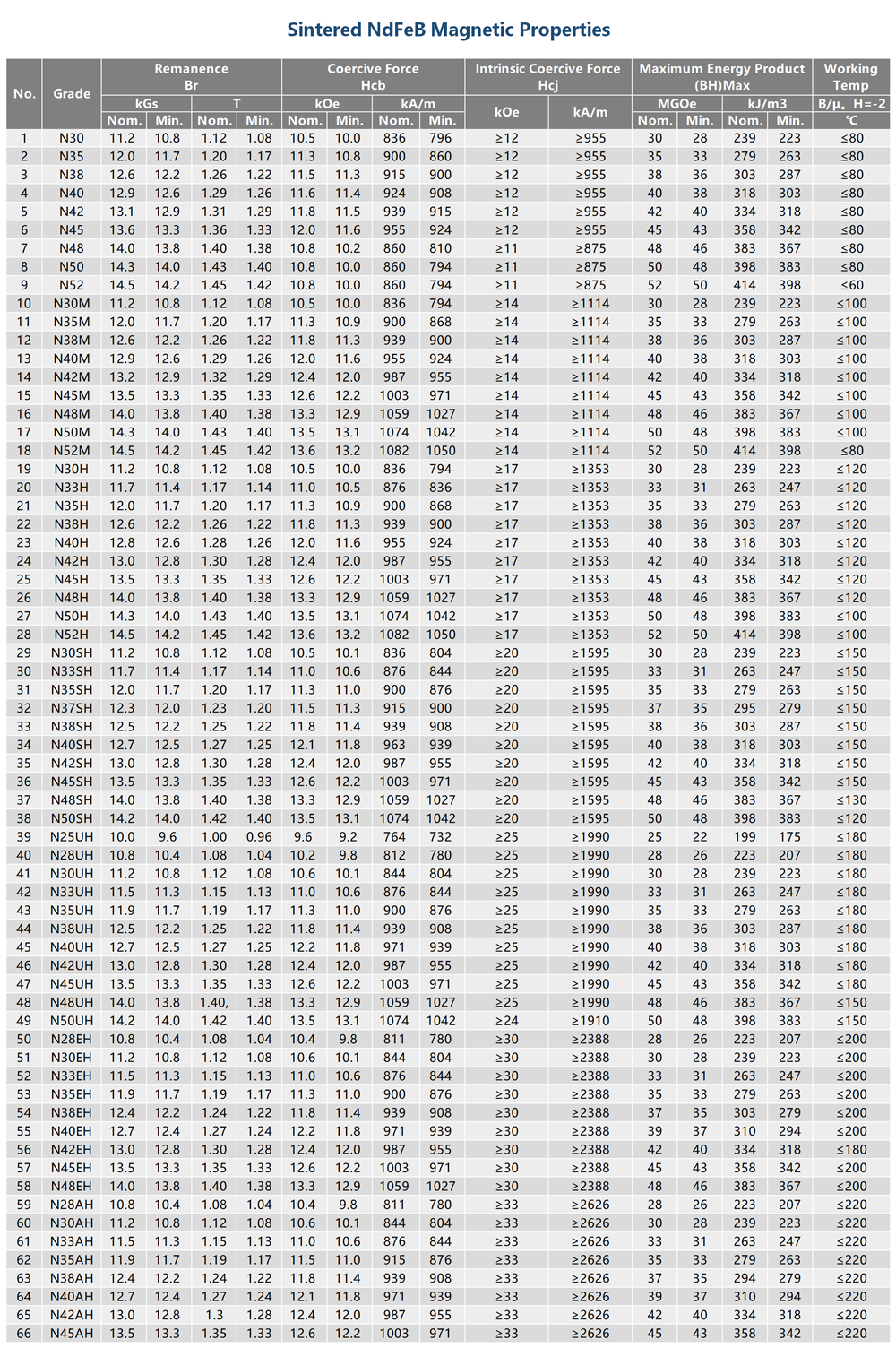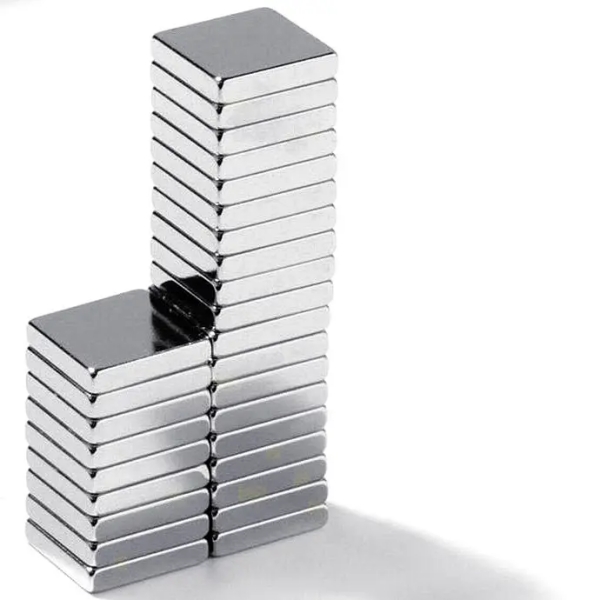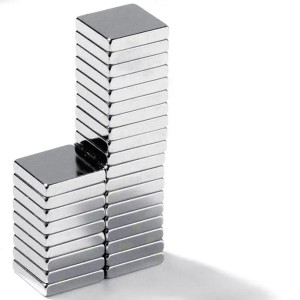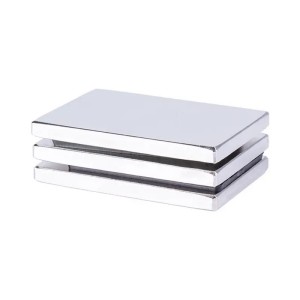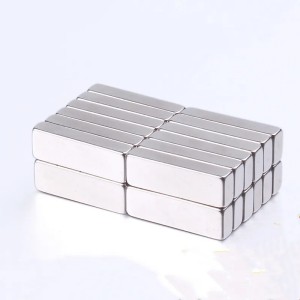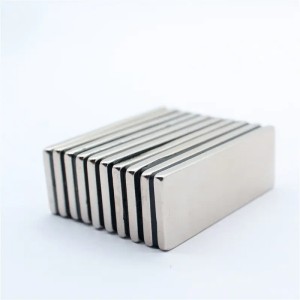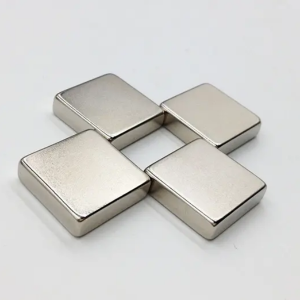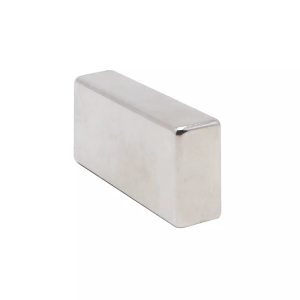|
Product Name:
|
Neodymium Magnet, NdFeB Magnet
|
|
|
Grade & Working Temperature: |
Grade
|
Working Temperature
|
|
N30-N55
|
+80℃ / 176℉
|
|
|
N30M-N52M
|
+100℃ / 212℉
|
|
|
N30H-N52H
|
+120℃ / 248℉
|
|
|
N30SH-N50SH
|
+150℃ / 302℉
|
|
|
N25UH-N50UH
|
+180℃ / 356℉
|
|
|
N28EH-N48EH
|
+200℃ / 392℉
|
|
|
N28AH-N45AH
|
+220℃ / 428℉
|
|
|
Coating:
|
Ni, Zn, Au, Ag, Epoxy, Passivated, etc..
|
|
|
Application:
|
Sensors, motors, filter automobiles, magnetic holders, loudspeakers, wind generators, medical equipment, etc.
|
|
|
Advantage:
|
If in stock, free sample and deliver at same day; Out of stock, delivery time is same with mass production
|
|
Neodymium Magnet Catalogue
Form:
Rectangle, rod, counterbore, cube, shaped, disc, cylinder, ring, sphere, arc, trapezoid, etc.
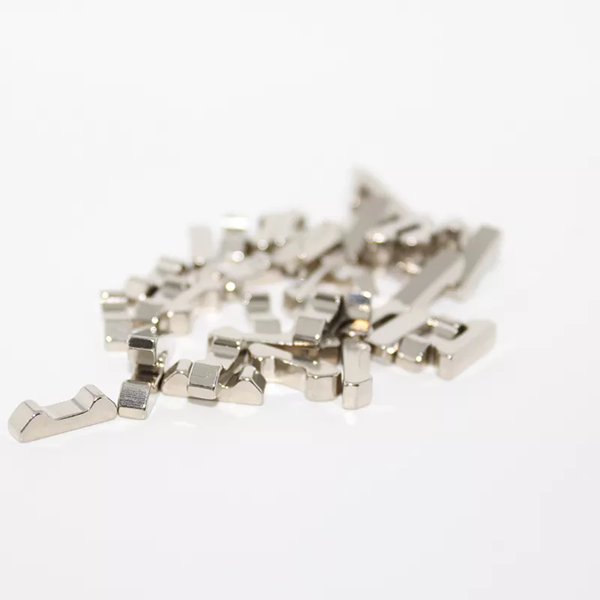
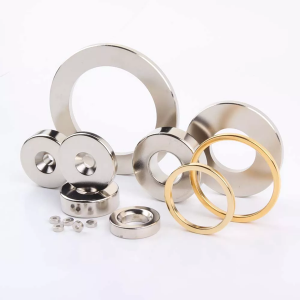
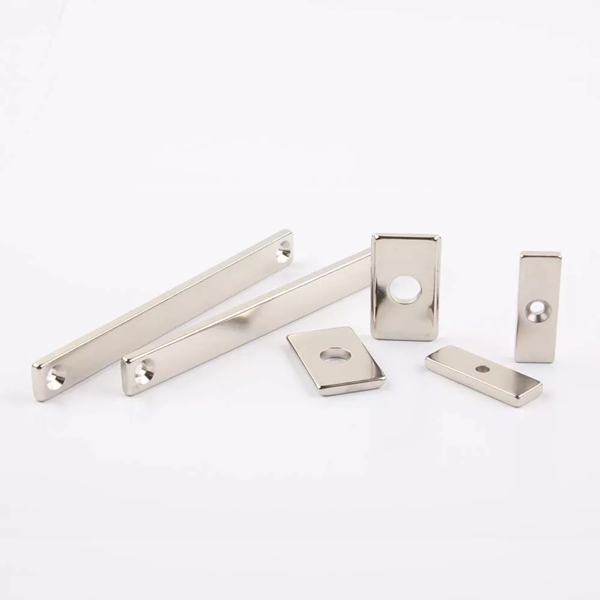
Iregular special shape series
Ring neodymium magnet
NdFeB square counterbore
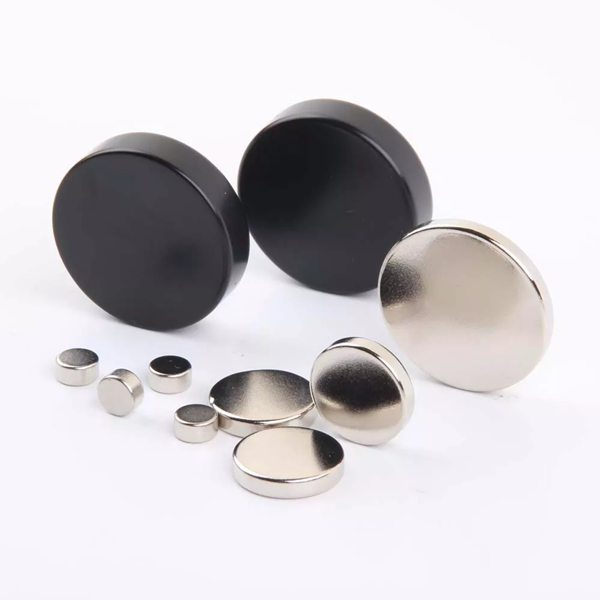
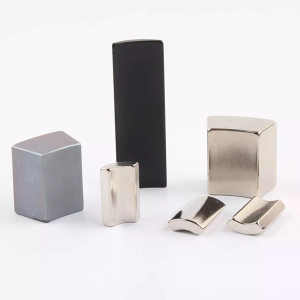
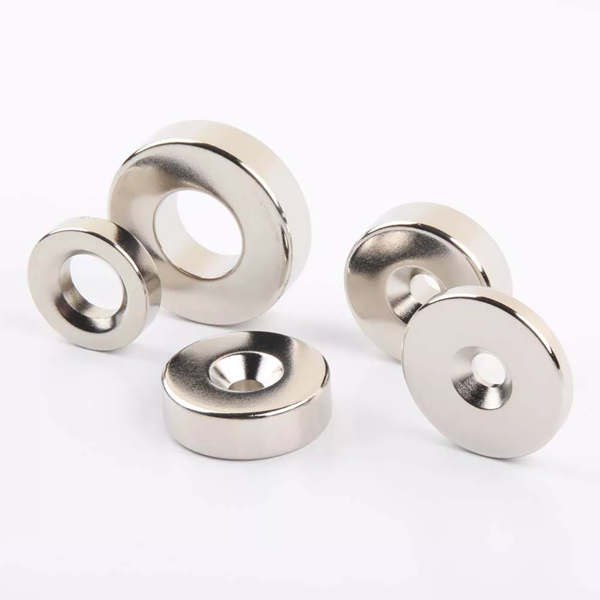
Disc neodymium magnet
Arc shape neodymium magnet
NdFeB ring counterbore
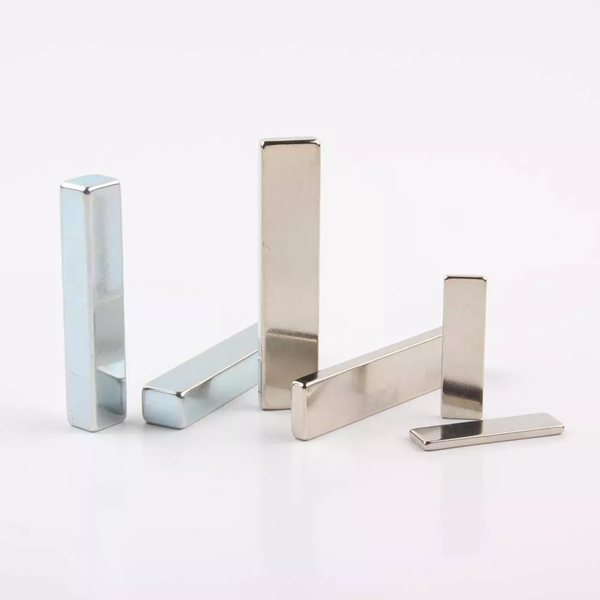
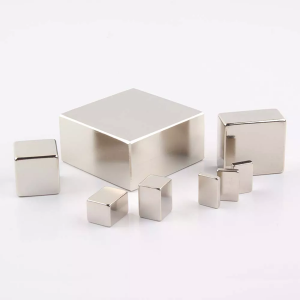
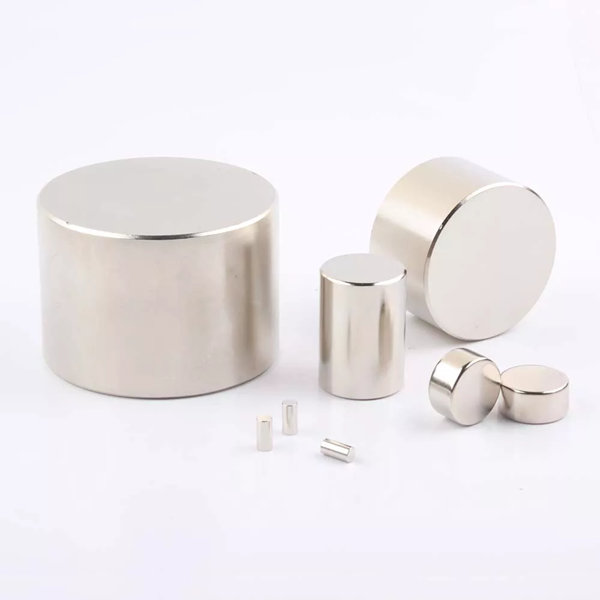
Rectangular neodymium magnet
Block neodymium magnet
Cylinder neodymium magnet
The magnetization direction of the magnet is determined during the fabrication process. The magnetization direction of the finished product cannot be changed. Please be sure to specify the desired magnetization direction of the product.The current conventional magnetization direction is shown below:
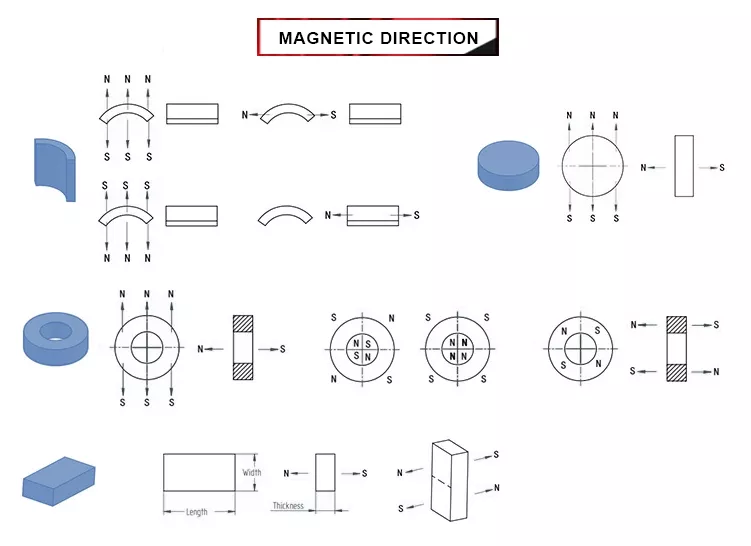
About mangetic direction
Isotropic magnets have the same magnetic properties in any direction and attract together arbitrarily.
Anisotropic permanent magnetic materials have various magnetic properties in different directions, and the direction in which they can obtain the best/strongest magnetic properties is called the orientation direction of permanent magnetic materials.
Orientation technology is a necessary process for producing anisotropic permanent magnet materials. The new magnets are anisotropic. The magnetic field orientation of powder is one of the key technologies for manufacturing high-performance NdFeB magnets. Sintered NdFeB is generally pressed by magnetic field orientation, so the orientation direction needs to be determined before production, which is the preferred magnetization direction. Once a neodymium magnet is made, it cannot change the direction of magnetization. If it is found that the magnetization direction is wrong, the magnet needs to be re-customized.
Coating and Plating

Production Process
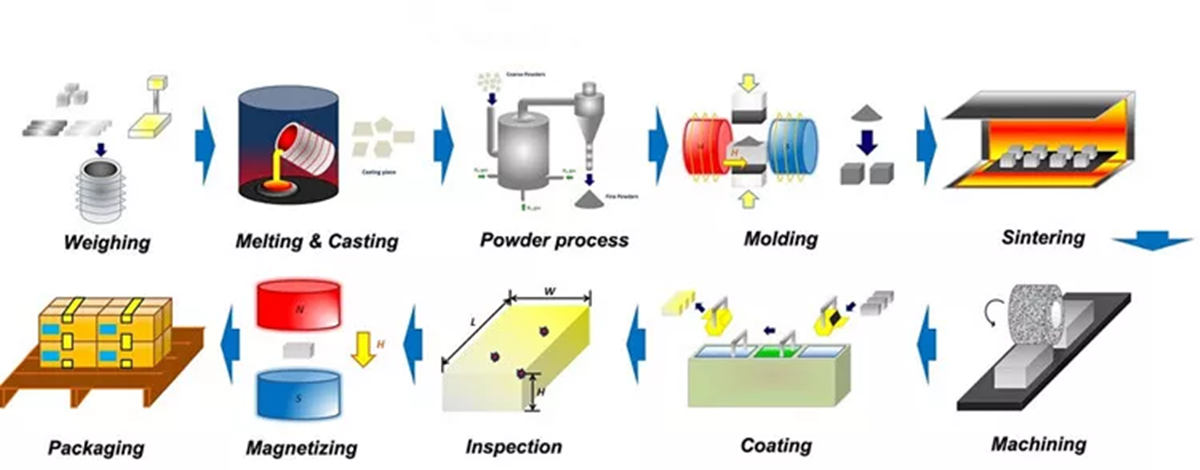
Packing details
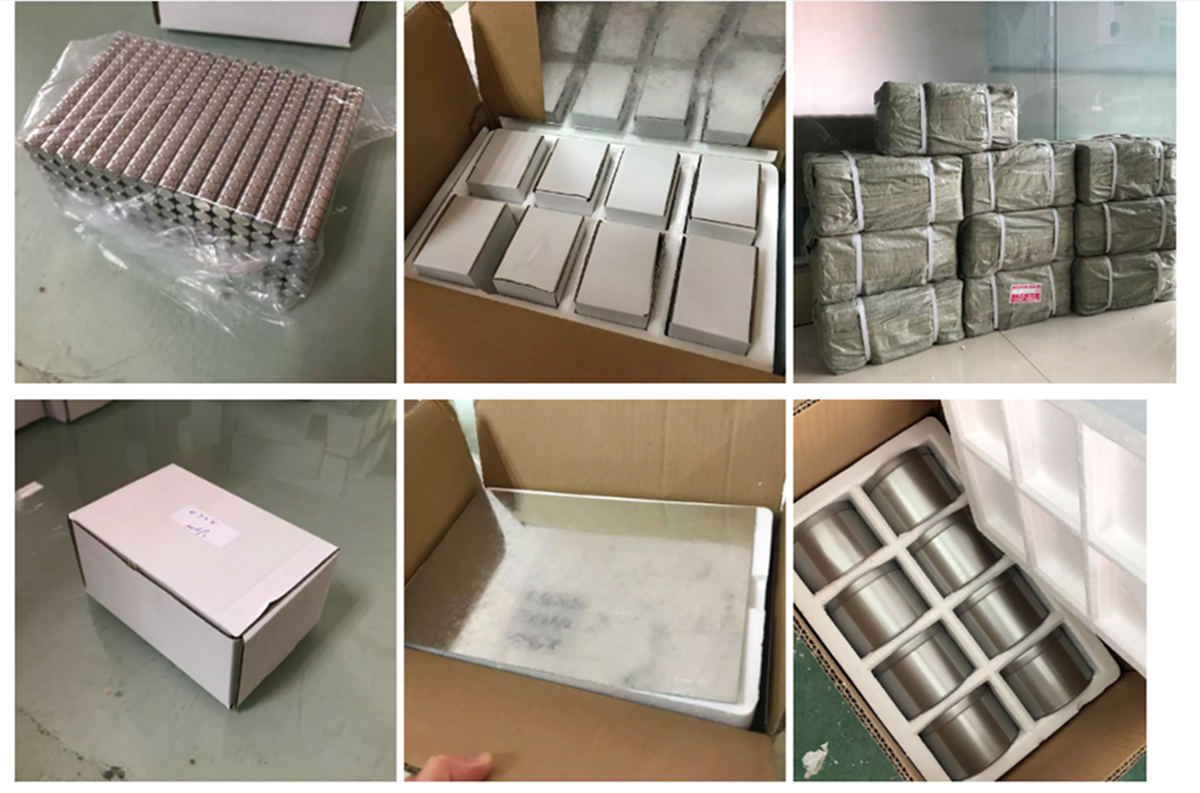
FAQ
